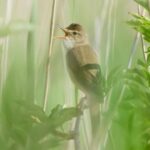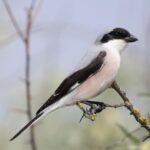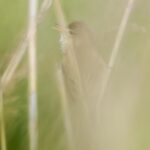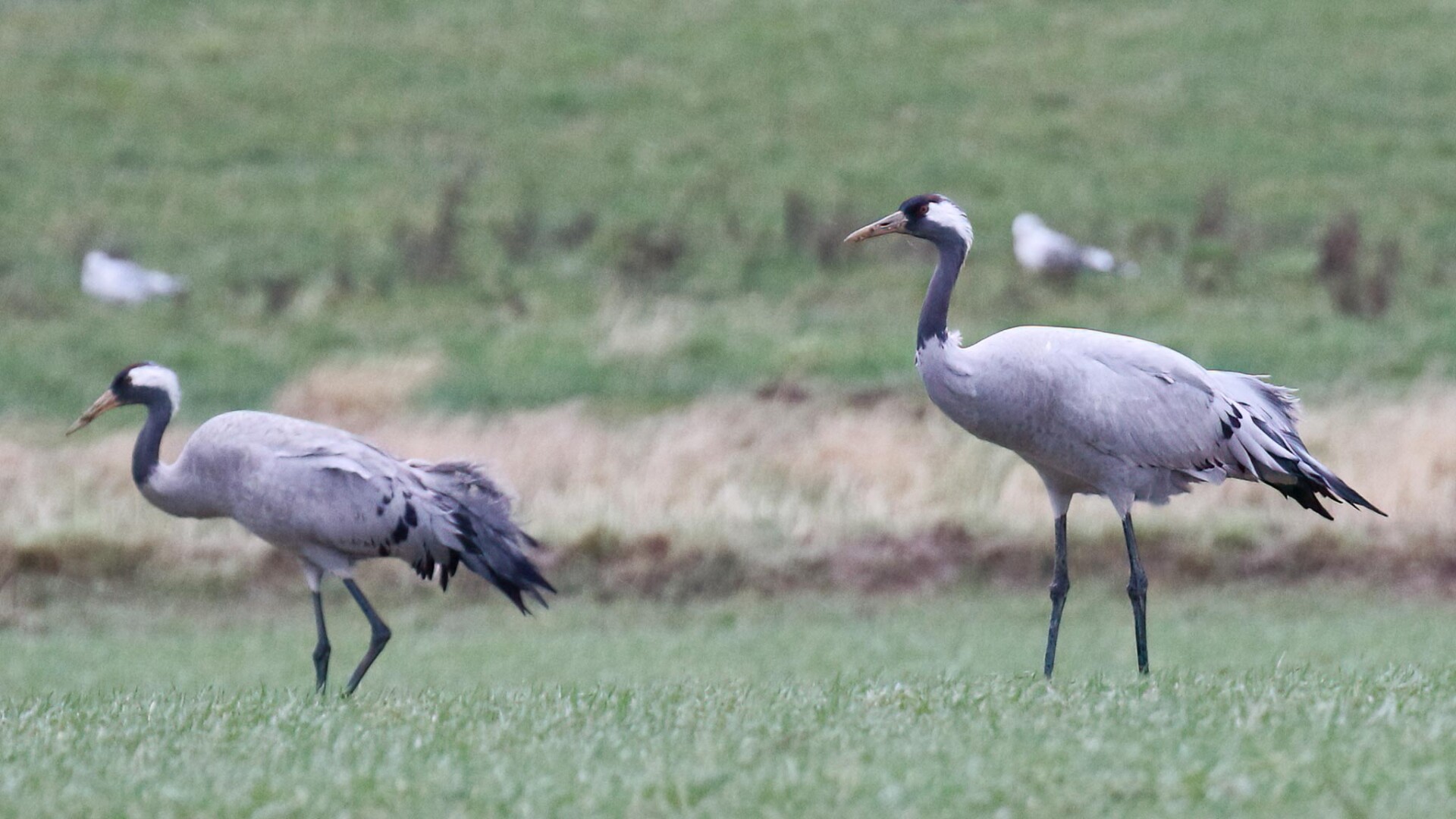Day 1 of a four day Autumn Tour in Norfolk. It was mostly a rather grey, damp and breezy day, but the showers were well spaced and no more than very light drizzle and we managed to avoid the worst of them. And it didn’t stop us kicking the four days off in style with some good birds.
It was raining first thing, but it was expected to clear from the west. We decided to head over to Snettisham. It was not a big tide today, but perhaps it would be enough to push some waders in. As we made our way west, we saw several skeins of Pink-footed Geese flying inland from the grazing marshes where they had spent the night to feed. Flocks of Rooks and Jackdaws came up from the fields as we passed.
As we made our way out at Snettisham, we stopped for a quick scan of the sailing club pit. Two Little Grebes and two Great Crested Grebes were out on the water.
When we got up onto the seawall, the tide was still coming in. We could see a large roost of Oystercatchers gathered on the mud up by the sailing club. Several small groups of Golden Plover flew past us, out to the mud in the middle.
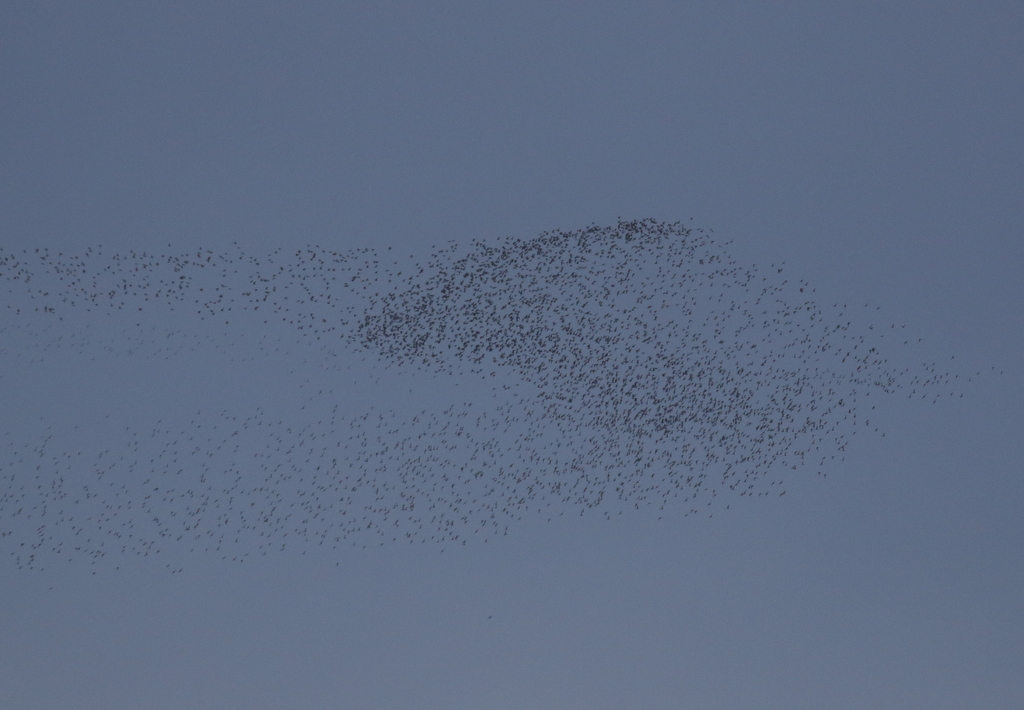
While we stood and scanned the Wash, the huge flocks of thousands of Knot came up from the mud further out and started swirling round over the water, twisting and turning, making different shapes. There had to be something spooking them and there was a young Peregrine chasing after them.
We watched as the Peregrine flew round through the flocks and it quickly managed to get one Knot separate from the rest. It chased after it, up and down, back and forth, for some time. The Peregrine looked like a juvenile, inexperienced, and did not seem to know how to catch its quarry at first. Eventually the Knot started to tire, flew down closer to the water and stopped changing direction so quickly. The Peregrine took its chance and grabbed it, then started to fly in towards the shore with the Knot in its talons.
The Peregrine had just got to the shore when we noticed a second one appeared, flying very low over the mud. It headed straight for the first and when it got close it swooped up. A Peregrine dogfight ensued, the new bird chased after the first for a minute, diving at it repeatedly.
Finally the first Peregrine dropped the dead Knot, which seemed to fall into the grass at the top of the beach, but strangely neither of them went down after it. Both seemed to lose interest and drifted off. One flew towards us along the shore, flushing all the Oystercatchers.
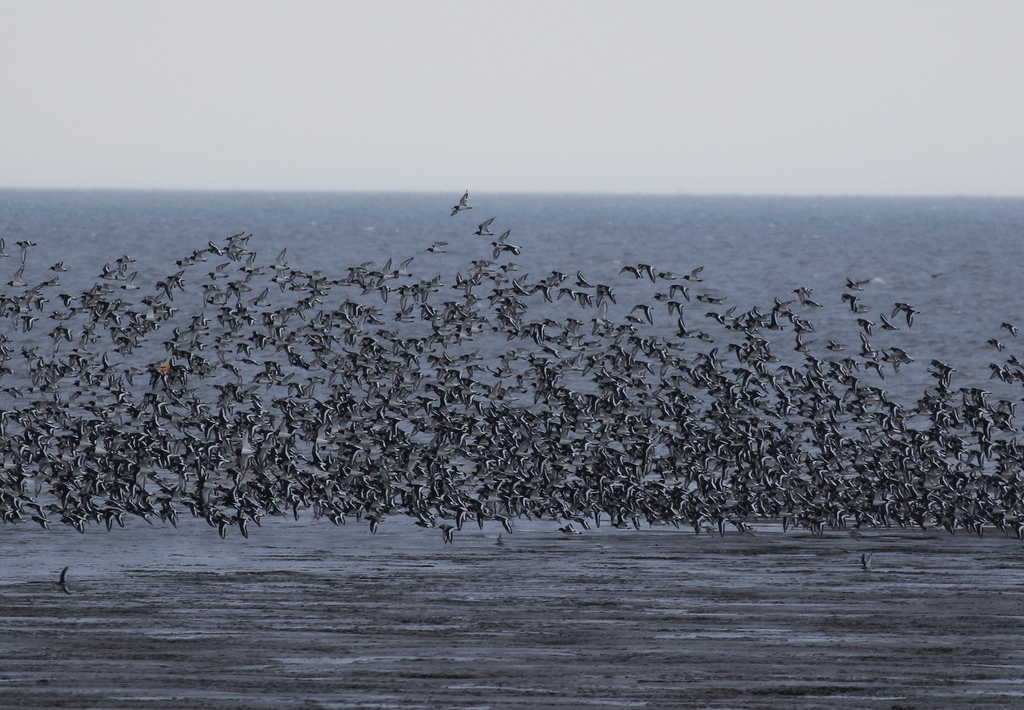
We turned our attention back to the mud in front of us. The Golden Plover had flown off, presumably spooked by all the excitement, but the others slowly started to drift back in. Some of the Dunlin returned to the edge of the channel. We looked through but couldn’t find anything with them today, apart from one or two Sanderling. There were several Grey Plover scattered on the mud, and we got a Bar-tailed Godwit in the scopes.
The bulk of the Knot, the large flocks, settled back down again off in the distance, but a couple flew in and landed on the mud at the bottom of the bank just below us, giving us a closer view. A small group of Ringed Plovers were roosting among the rocks at the bottom of the bank.
There were quite a few Shelduck on the water, presumably lingering birds which had gathered here to moult. Groups of Teal and a few Mallard were scattered around on the mud. A small group of ducks in the shallows on the edge included several Pintail, much larger than the Teal they were with, the drakes still in their drab eclipse plumage.
Despite the weather, there were a few birds on the move today. Several small flocks of Starlings flew over the pits, heading south. A few Meadow Pipits flew past over the beach, one stopping briefly to feed around the rocks. A Rock Pipit flew past calling too.
It was high tide now and there didn’t seem to be much more movement of waders. The rain seemed to have cleared through, so we decided to move on. We headed round to Titchwell next today – given the weather, we had no problem parking today!
Through the new ‘Welcome Hub’, we headed straight out onto the main path. A quick scan through the trees out over the Thornham grazing marshes produced a couple of distant Common Buzzards on the bushes at the back.
Almost up to the junction with Meadow Trail, we heard a Yellow-browed Warbler call ahead of us. We hurried up after it, just as a tit flock came out of the sallows and across the path. We followed it up through the trees by the path, looking to see what was with. We found several Goldcrests and one or two Chiffchaff, but there was no further sign of the Yellow-browed Warbler, before the flock came back over the track and disappeared out into the bushes in the middle of the reedbed.
As we came out of the trees, a wisp of about a dozen Common Snipe flew overhead and out over the saltmarsh. We could see lines of Black-tailed Godwits flying up from the Freshmarsh and over the reedbed, heading inland to feed in the fields.
There was nothing on the Reedbed Pool today, but the channel just beyond did provide a Coot, a pair of Gadwall and a pair of Mute Swans. It started to drizzle now, so we hurried on to Island Hide and donned our face masks to find some welcome shelter.
There was still a sizeable flock of godwits out in the middle of the Freshmarsh, and through the scopes we could see they were a mixture of Black-tailed and Bar-tailed Godwits. Even though they were asleep, we could see the Bar-tailed Godwits were smaller, shorter, with paler upperparts contrastingly streaked with dark.
Four Avocets were sheltering behind the small brick island, the hardiest individuals who will try to stay here for the winter rather than heading off south like most of the others have already done. A large group of Ruff were in the shallow water over towards the reeds. Several Golden Plover were on the grassy island in front of Parrinder Hide, along with a single Dunlin.
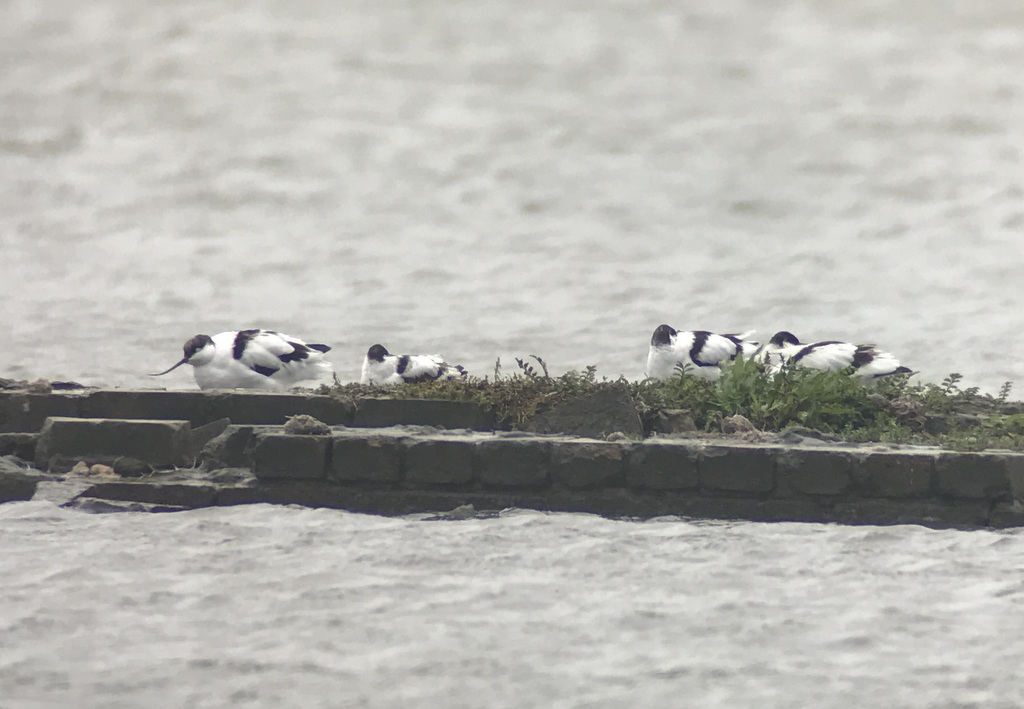
There were lots of Teal, the drakes still mostly in drab eclipse plumage though one or two are starting to smarten up again new. One of the drake Shoveler was also more advanced in its moult back to breeding plumage, but the drake Gadwall and Mallard are already mostly moulted back out again. We couldn’t see any Wigeon on here today.
It had stopped raining now, so we headed back out to the main path and continued on towards the beach. The tide was in and the Volunteer Marsh was still covered with water. There were several Curlew and Redshank on the wet mud in the middle and we found a few Wigeon swimming on the channel at the far side.
Over the bank, we stopped to scan the Tidal Pool. It was rather grey and gloomy, but we managed to find two Spotted Redshanks today, asleep at the back, noticeably paler white below than the Common Redshanks. There were several Black-tailed Godwits and one or two Dunlin too. With more Grey Plover, Bar-tailed Godwits and Turnstones roosting on the spit.
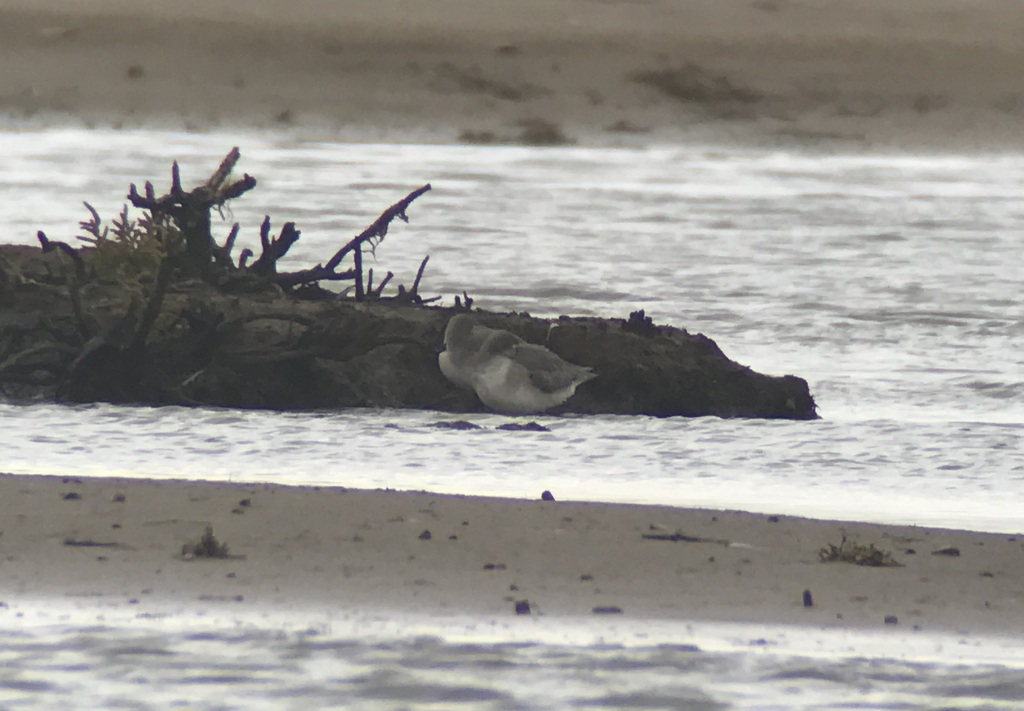
Out on the beach, the Wheatear was still feeding along the tideline. It worked its way off away to the east as we arrived, but a couple of minutes later then reappeared right in front of us. A great view – still very tame and obliging, it fed completely unconcerned at all the people here. A couple of Skylarks flew in and landed on the tideline further down too.
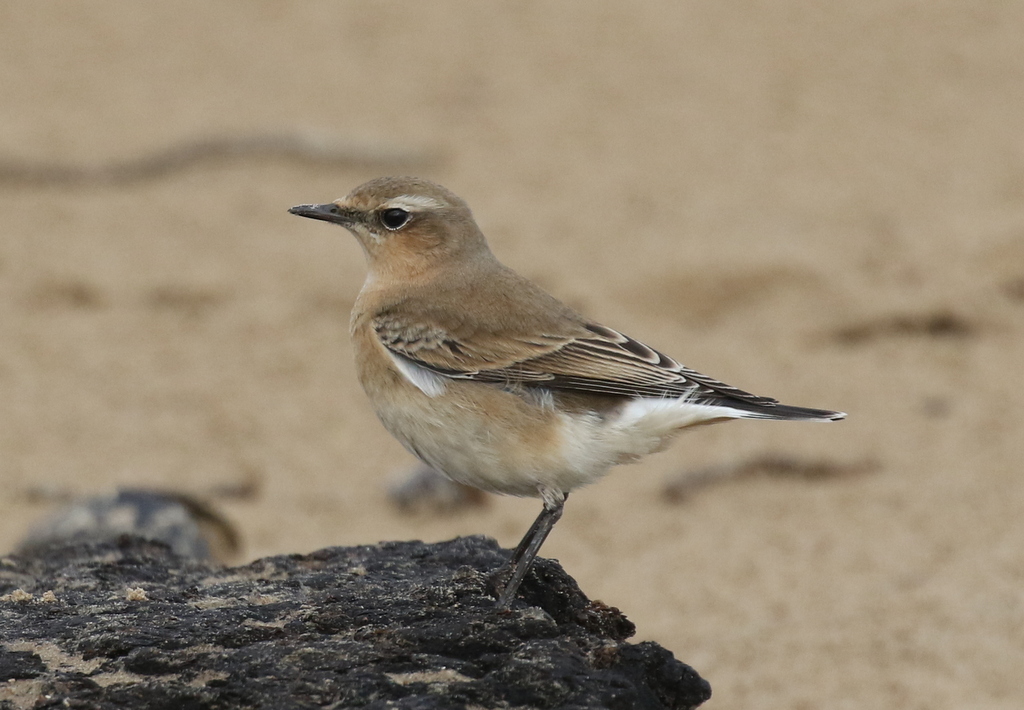
The tide was just starting to go out here, and there were not many waders on the shore. Looking out to sea, we could see a few Great Crested Grebe on the water. Several Gannets were flying past, white adults and dark juveniles, mostly distant but a couple came through a little closer. We ould see small groups of Common Scoter flying around right out on the horizon, in front of the wind turbines.
As we passed the Thornham grazing marsh reedbed, we heard Bearded Tits pinging. We looked across to see two fly up, skimming over the tops of the reeds before dropping straight back in. That would probably be the best we could hope for today, in the wind.
Back to the Visitor Centre, we turned out along Fen Trail. Along the boardwalk out towards Fen Hide, we stopped to watch a Goldcrest in the sallows. It was busy feeding right by the path, within a few feet of us and totally unconcerned by our presence, too close to focus optics on!
We had a quick look at the pool at Patsy’s Reedbed. There were just a few commoner ducks on here today, plus a few Coot and a Little Grebe, nothing else of any note. As we turned to walk back, several thousand Pink-footed Geese came up from the fields inland, before dropping back down again.
We made our way back round via Meadow Trail, but there was no sign of the tit flock or any warblers now. So we carried on back to the Visitor Centre for a hot drink and a break for lunch. A Brambling called from somewhere back in the trees while we ate.
After lunch, we headed back east. We drove into the drizzle again, and it was very misty looking out over the marshes as we passed Holkham. We turned inland at Wells and then down a minor road through the fields towards Wighton. Despite the weather, there were still a few cars already parked here.
We joined the small group of people on the edge of the field watching the Hoopoe down on the track just beyond the hedge. It was very close today, and we had great views as it fed, periodically pulling a tasty morsel out of the wet ground and throwing its head back to swallow it.
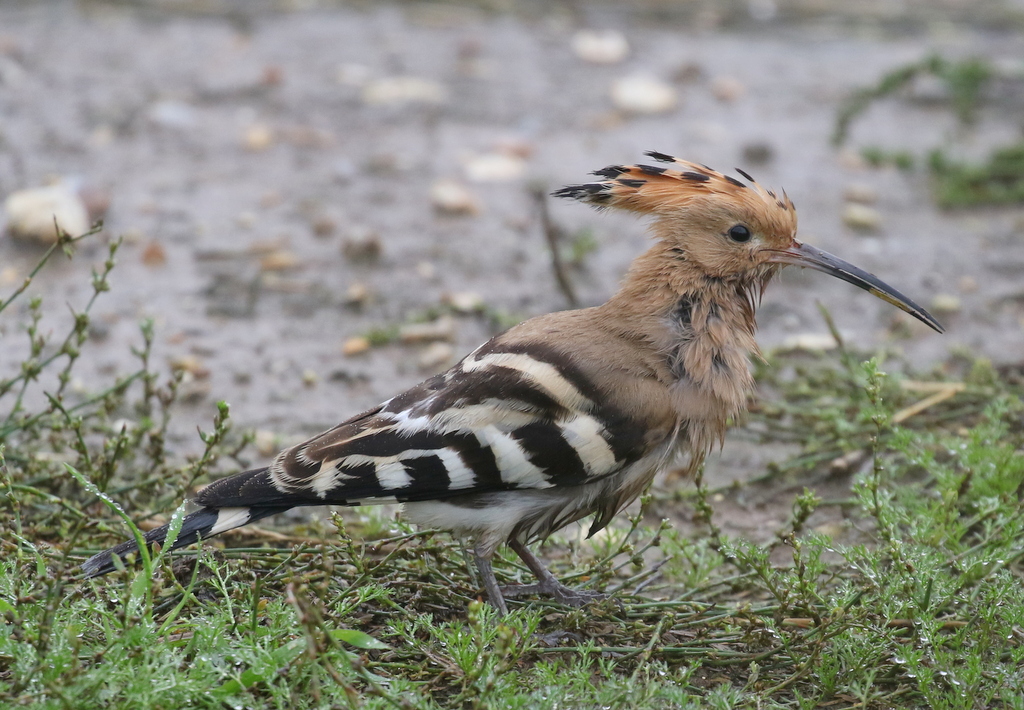
Widely distributed across the warmer parts of the continent in the summer, Hoopoes are migrants which mostly spend the winter in Africa, so this bird looked particularly out of place in a cold and damp October day in North Norfolk! They turn up fairly regularly in the UK, mostly as overshooting migrants in spring. There has been some debate about how long this Hoopoe has been here – there were a few records along the coast in spring and one was reported from Wighton back at the start of August.
We carried on east inland, along some narrow country lanes – the only sighting of note being a speeding white van coming the other way, which smashed into the wing mirror of the bus as it raced past. Very annoying! It didn’t stop, so we continued on our way.
We cut back down to the coast road at Salthouse and parked by the duckpond. It had stopped raining now, so we got out and looked across to a small pool in the middle of the grazing marshes. There had been a Red-necked Phalarope here for several days but there was no sign of it now at first. It can be hard to see if it gets tucked in around the edges, so we stood and watched. A Stock Dove flew over.
Four Shoveler swam back out into the middle and started to feed, heads down. The Red-necked Phalarope has often been feeding in amongst them, but it didn’t reappear straight away. We decided to walk out along the footpath across the marshes to try a different angle, but we hadn’t got far along the side of the main road when we looked back and saw a small white bird swimming along in front of the reeds, tucked in the corner.
We stopped and set up the scopes and there was the Red-necked Phalarope. It swam round in circles in front of the reeds, picking at the surface of the water for small invertebrates it stirred up. It gradually worked its way along the back edge of the pool and then swam out to join the Shoveler in the middles. The ducks are obviously doing a good job of stirring up the water themselves, and the Red-necked Phalarope is taking advantage to help it find food.
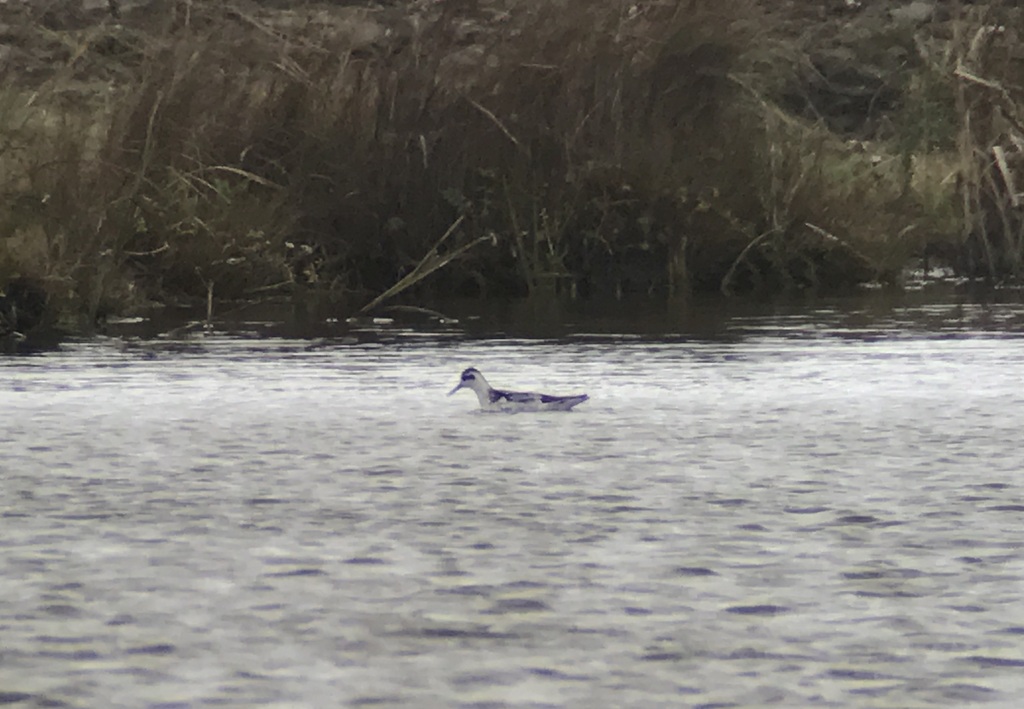
A juvenile, the Red-necked Phalarope has possibly come from Scandinavia. They normally spend the winter out at sea, the birds from there flying all the way down to the Arabian Sea, so it has a long journey ahead of it.
There was nothing of note with the gulls on the duckpond, nor with those loafing on the fields off Beach Road. A large group of Canada Geese were on the grass towards Gramborough Hill. So we headed back west and stopped again just before Wells.
As we got out of the minibus, a couple of Brown Hares were in the far corner of the field in front of the parking area. A Marsh Harrier flew over the field west of the track. We turned our attention to the pool the other side, where a large white bird by the bank at the back was a Great White Egret. Through the scopes, we could see its long, dagger-like yellow bill.
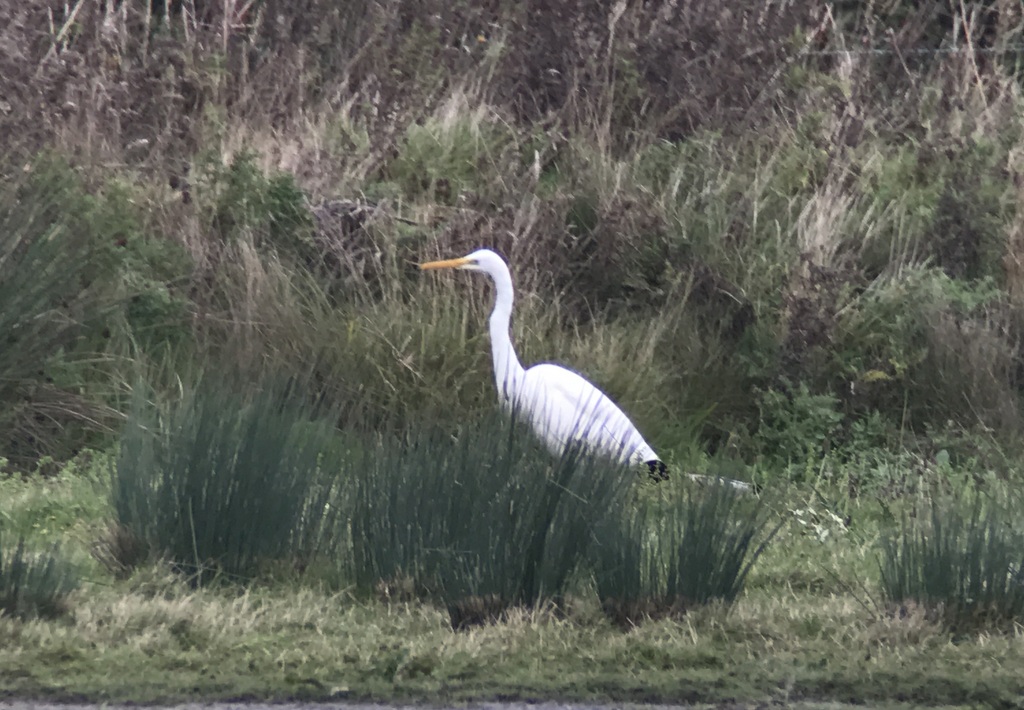
There were lots of gulls flying back and forth over the recently harvested potato field beyond. Most were Black-headed Gulls but two noticeably smaller gulls were in with them. We could see their more rounded pale upperwings and contrasting blackish underwings, two Little Gulls.
There were lots of ducks but not many waders on the pool today and we couldn’t see the Little Stint at first. After a while scanning it appeared from behind the Wigeon, Teal, Lapwings and Black-headed Gulls on one of the grassy islands. It was so small it was easily hidden. It was rather distant, but we had a good view of it through the scope, short-billed with rather clean white underparts, we could see its ‘braces’, the distinctive pale mantle stripes shown by juvenile Little Stints.
It started to drizzle again now, so as time was already getting on we decided to call it a day. We had enjoyed a good start today, and there would be more to see tomorrow.
